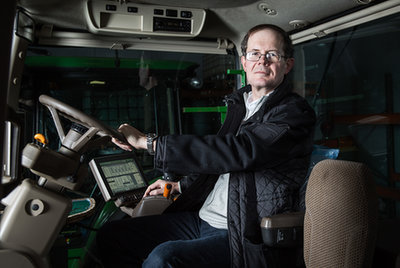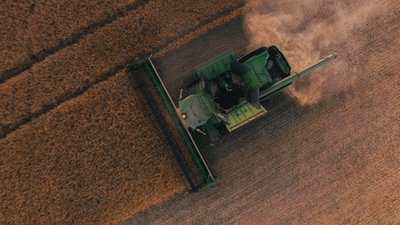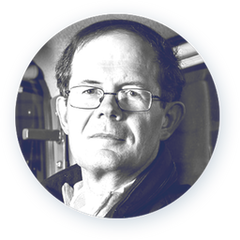interview
’Machine interoperability is one of the main challenges we face when it comes to the uptake of IoT technologies. For the Internet of Things to work, sensors, actuators and objects need to communicate freely with each other. Only then, an intelligent, programmable and interactive network can be built.’
Claus explains that this is very relevant to modern day farming. ’Moving things, i.e. tractors or harvesting machinery, can benefit from direct access to relevant data such as the lay-out of the field, the soil structure or the density of the crop. We could then optimize routes or steer their actions. However, a common standard for vehicle to vehicle communication isn’t currently available.’
The key aspect to interoperability is language: vocabulary, semantics and the alignment of protocols to describe the tasks and processes executed in agriculture. ’Unfortunately, most software engineers have little knowledge of end-user requirements,’ says Claus. ’We experience a chicken and egg problem. For example, ADAPT is an open source data translating framework that enables interoperability of disparate systems. However, machine manufacturers don’t implement ADAPT, because no software uses the framework. And software companies don’t use the standard, because the machines do not speak the ADAPT language. With our use case, we intend to show the benefits of the “esperanto of agriculture”. We hope to assemble a critical mass to move the implementation forward.’


The EU plays a vital role, according to Claus. ’Open source API platforms have the right papers to set the standards for sensor-enabled, data-driven smart applications. EU support, such as recently announced for the formation of the open FIWARE foundation, gives these communities a push to becoming the de-facto standard.’ The timing seems right: ’We are surprised by the increased desire to share data, even from SME’s. The interest of parties outside the IoF2020 project to implement the standards, is a pleasant surprise to us.’
'The key aspect to interoperability is language: vocabulary, semantics and the alignment of protocols.'
’What we hope to have achieved by the end of the project? Many things. Most importantly, I hope we have showcased handsfree, reliable data collection through IoT. From various sources, across brands and models, reliable and “plug & play”– with ADAPT as an example to stimulate future developments in agricultural machinery communication. First, standardize communication between vehicles and the platform for effortless file transfer. And second, optimize machine operations, like for example fleet usage, through seamless communication between different brands and models of farm machines.’
Partners in this use case:
Author: Renske Solkesz, Schuttelaar & Partners
use case
Farm machine interoperability
Claus Aage Grøn Sørensen
Head of Research Unit






